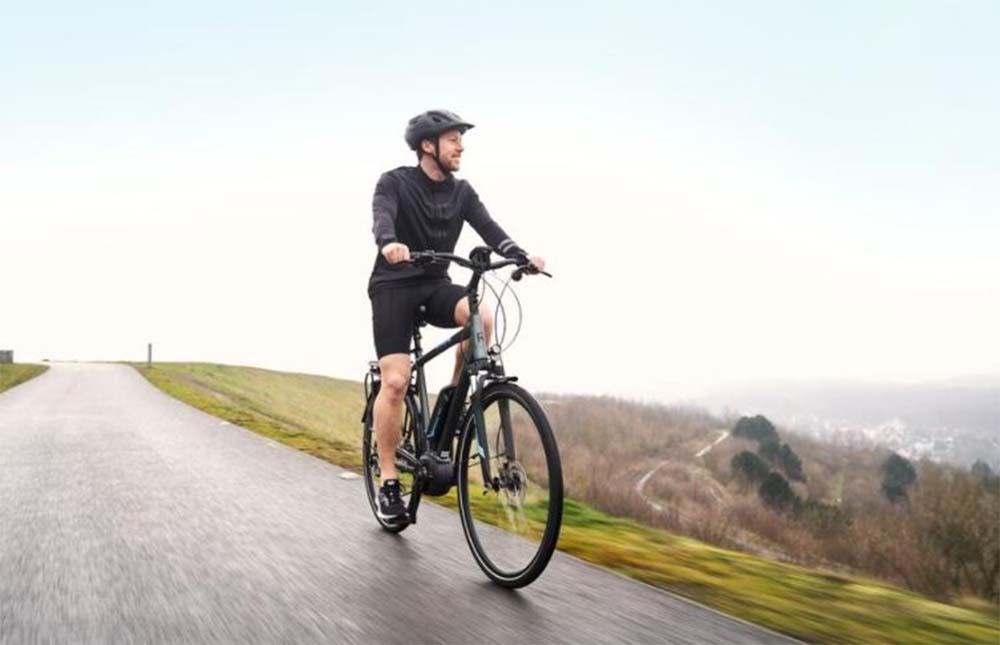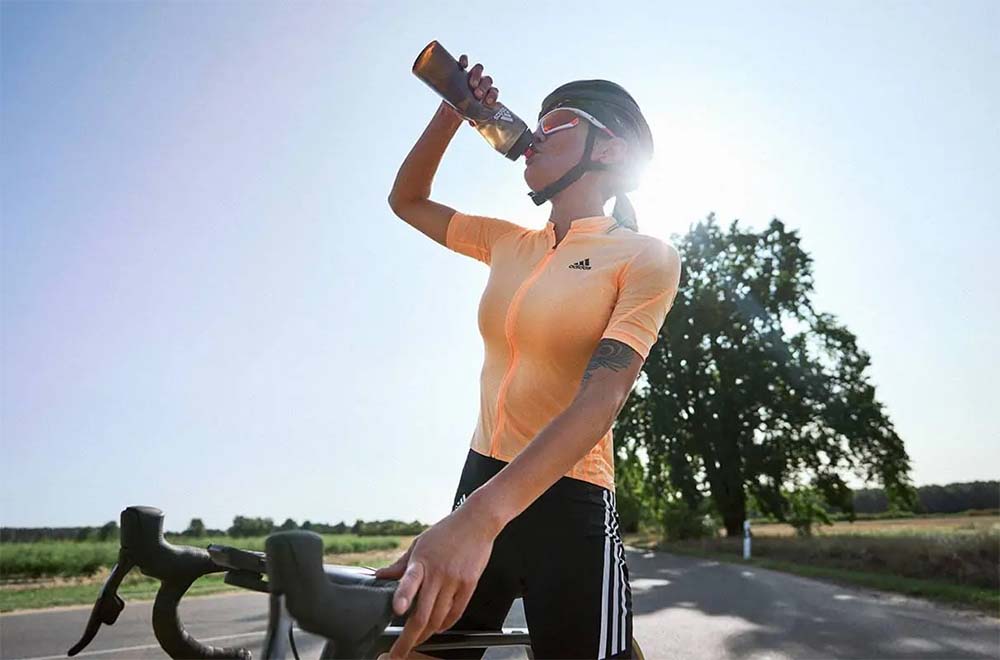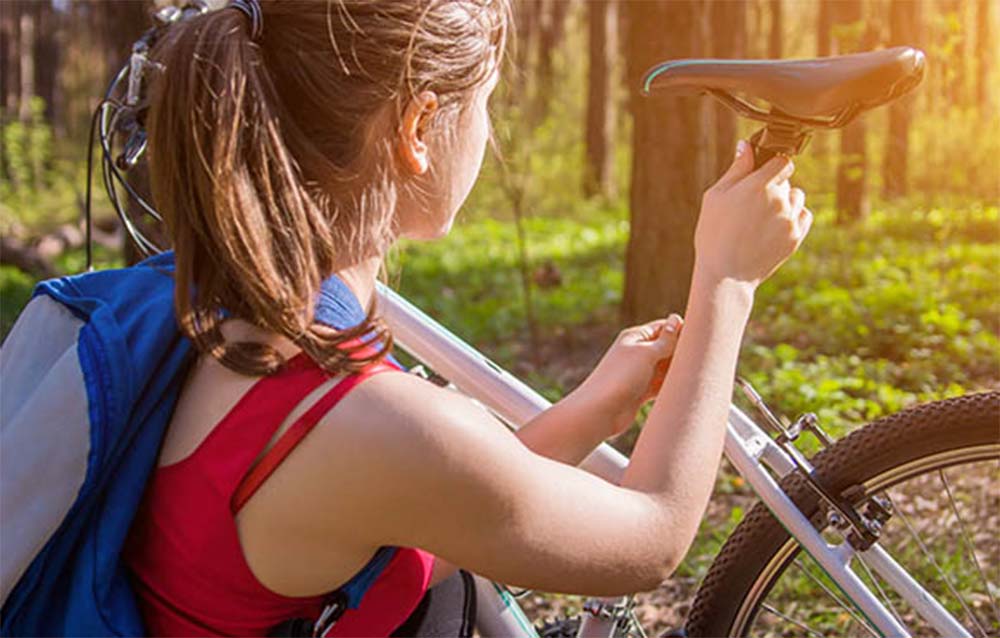15 Cycling mistakes to avoid

Whether you’re a novice cyclist or a yarn veteran with thousands of miles on your legs, we all make mistakes. This is how we learn, so to speak, an “experiential learning cycle”. So, until you learn more about these common cycling mistakes, hope they help you and even improve you as a rider.
1 Saddle height
Aside from soft tires, saddle height is one of the main reasons for a rider’s inefficiency, as placing the saddle too high or too low means the power from the legs isn’t properly transferred. As a guide to getting the correct saddle height:
Put your heels on the pedals.
When your legs are at the very bottom of the pedal stroke, your legs should be almost straight, but not quite straight.
Put your saddle at this height.
Then, when riding with your foot in the “normal” position (the ball of the big toe is above the center of the pedal axis), you should achieve an effective pedaling action at the ideal height.
Don’t be afraid to tune up or down a bit from this point, just fine tune when needed.
When you are in the saddle, you should still be able to touch the ground with the toes on either side of the bike.
2 The handlebars are too high or too low
Make sure to adjust the saddle first, then the handlebars. If you are a beginner, the difference between the height of the seat and handlebars can be a centimeter or two. After a few trips, you will get used to this pose. Then you can move the handlebar down a bit.
3 Not fueling the ride properly
For runners, the common phrase “hitting the wall” refers to when the body runs out of fuel/energy and stops. Cyclists often refer to this condition as a “bonk,” and it’s something that happens to most riders at some point, even pros. When out riding, bring a little more food than you actually need, maybe two bottles, especially when riding in more remote areas where there is little place to get supplies. Plan ahead because it’s better to stock up on some food/drinks than risk being freaked out.
4 Corner braking
This is a very common riding mistake, especially among new cyclists. The safest and most effective technique is to brake before a corner, not actually braking in the corner, as doing so while leaning the bike over can cause the bike to lock up, losing control and crashing.
The safest and most effective technique is to brake before the corner, not actually brake during the corner.
To brake safely, you should brake as you approach a corner, making sure you brake lightly, but enough to slow you down enough that you can pass the corner safely. Remember to brake early in wet conditions as stopping distances will be greater, especially for those using calipers rather than disc brakes.

5 No spare parts or tools
When you go, you’ll want to make sure you have some necessary spare parts and tools ready to take you home in the event of a problem. As a guide, I always carry the following items with me, which can be tucked away in a saddle bag under the saddle or in a pocket:
2 x inner tube
tire lever
Patch (preferably stick on type right away)
Mini Pump (or CO2 Inflator)
Multitool (preferably with link extractor)
6 Hit the brakes hard
When it’s time to slow down, don’t just “grab” the brakes hard. Braking should be done in a controlled manner to keep your weight distribution on the bike as stable as possible. The dangers of sudden braking include loss of control and stability, which in some cases can cause you to fly over the handlebars. To ensure safe braking, you should look ahead, predictably and steadily use both front and rear braking, with a slight emphasis on front braking.
7 Ride too far, too hard, too fast
Know your abilities and harness it. There’s nothing wrong with having high ambitions, but the key to achieving them is building them steadily. Cycling is a strenuous sport, but very rewarding. Don’t knock your confidence down by doing too much too soon, as good sustained stability training will give you progress instead of trying to hammer it from the start.
8 Poorly maintained bikes
Again, this is basic information, but important from both a convenience and a security standpoint. Get in the habit of checking your bike regularly and maintaining it, especially if you don’t want to be embarrassed about having to be rescued from the side of the road. Pay special attention to your brakes, gears, handlebars and tires, and clean and lubricate your chain regularly. Regular maintenance of your bike makes sense, especially if you’re unsure or doubt about the more complex parts of your bike. The best advice is to take no chances.
9 Inappropriate Clothes
This is another element of cycling that you need to plan for, or you may find yourself miserable on the ride, or even worse, in extreme difficulty. Make sure you check the weather forecast throughout the ride. Consider your planned ride time to see if weather conditions may change.
In cooler conditions, it is best to overdress rather than dress slightly.
In colder conditions, it’s best to overdress rather than dress because you can always take off your clothes if you’re too hot or unzipped to let in cold air. Conversely, if you’re going out in only shorts and short sleeves and there’s a storm, be sure to bring a wind/waterproof layer and/or a vest that fits in your pockets because, for example, your body temperature may drop rapidly. This becomes even more important if you are riding in hilly terrain with dramatic elevation changes, where you may be very warm on the climbs but icy on the descents due to wind chill.

10 Not using gears effectively
Gears help improve your power efficiency on different terrains, so make sure you use them correctly. Most bikes will have over 20 gears, offering a very wide choice of ratios to suit all abilities. It may take a while to find the gearing that works for you, but for sure you shouldn’t pedal so hard at 10 mph on a flat road that your body starts rocking from side to side . On the other hand, you shouldn’t try to flip a big gear so that every pedal rotation is like doing a weight training session and your knee starts to hurt.
As a guide, it is recommended that you maintain a cadence of 70-90 rpm (pedal revolutions per minute) on flat ground. Make sure you shift into an easier gear on climbs and a harder gear on flatter descents. It seems like basic stuff, but trust me, it’s more common than you realize if I see acceptable numbers of people struggling with the wrong gear.
11 Squeaky chain
Not only will a squeaky chain irritate you and your rider, but it won’t affect your bike’s chain or cassette (the gears on the rear hub) too much because the sound can wear down your components. So, put on some light oil or chain lube, (there are many available for wet and dry riding) wipe off the excess oil, and off you go! With no more squeaks, your chain (and other components) will be forever grateful and will last longer than you would otherwise.
12 Don’t know how to replace a flat tire
You will end up with a flat tire. Before your next big ride, watch some videos and practice at home so you’ll be ready when you’re finally flat. Know how to use tools and pumps, and always carry a spare tube or two with you. If you don’t need them, you’ll make someone’s day when you stop to help them.
13 Join a group ride before you’re ready
You’ve just watched the Tour de France and Japan. You roll onto your local handlebars and drool on group rides to show them what a real sprint is. hold up.
Riding at high speed is a skill. Knowing how to regulate speed and ride predictably is a requirement for group riding. Introduce yourself to the group for the first time, then hang out in the back the first few times. Practice moving in the pack when you are comfortable and feel comfortable riding in a team. This is for your safety and everyone else’s.
14 Don’t shift gears
By now, your bike probably has at least 20 gears. use them. Smaller gears up front make things like climbing hills easier. The larger gears on the rear of the bike likewise make things like climbing easier. So if you feel like you’re pedaling in the mud when you’re climbing, switch to a small cog in the front and a large cog in the back, and you should be able to pedal up the hill more easily. Step downhill in reverse (big gear front, pinion rear).
15 Care about what other people think
People who don’t ride bikes. Everyone has their own opinion on cycling. You may feel uncomfortable wearing tight cycling clothes, sweating profusely, or having the “right bike”. The only thing that matters is that you ride your bike, stay safe and have fun. See you outside!
If you are looking for a new way of commuting or want a healthier lifestyle, we are here to help you. Visit our website to learn more about electric bikes and electric scooter or please leave information to us.
 Shuangye ebike
Shuangye ebike
